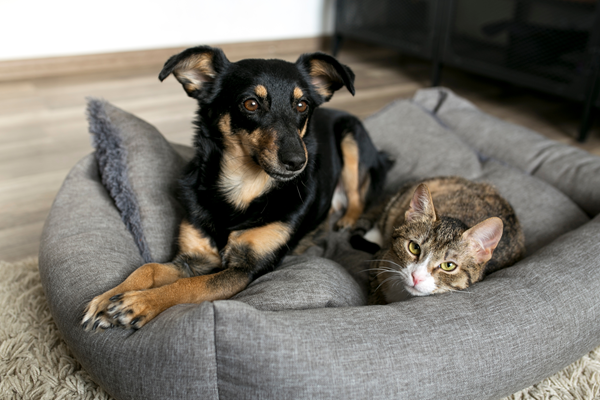
September 28 is World Rabies Day, a reminder that one of the oldest known viral diseases is still very much with us – but also largely preventable. Maybe you’ve wondered why rabies vaccines are so important, or if there is even risk for your pet. Let’s review the history, the science, and ways we can keep both pets and people safe.
A brief history of rabies
Rabies isn’t a new threat. Historical records show it was a known disease almost 4,000 years ago, when Sumerian laws punished dog owners if their pets transmitted the disease.
The first rabies vaccine was developed in 1885. Before widespread vaccination was introduced, rabies killed hundreds of people each year in the United States. The combination of pet vaccination, animal control, public health tracking, and prompt post-exposure treatment caused human deaths to drop, but don’t be fooled – there are still around 4,000 animal rabies cases reported each year, mostly in wildlife (e.g., bats, raccoons, skunks, foxes). A child died of rabies in Ontario, Canada, in 2024, after contact with a bat.
How infection happens
Rabies spreads almost exclusively through saliva, making bites the most common route of infection. Scratches or licks on broken skin or mucous membranes can also pass the virus along. Once inside the body, the virus travels through nerves to the brain. It can take weeks or even months for symptoms to appear.
For dogs and cats, contact with wildlife is a key risk. In many regions, bats, foxes, raccoons, or other free-roaming animals act as reservoirs for the virus. For people, it’s often our own beloved (but unvaccinated) pets that become the link in the chain.
For both humans and animals, once symptoms appear, the outcome is the same: rabies is almost universally fatal.
The power of vaccines
Here’s the hopeful part: rabies is one of the few diseases where we know how to break the cycle. Widespread vaccination of dogs has demonstrated an overwhelming protective effect, for example, dropping rabies cases by 95% in Latin America. In parts of Asia and Africa where vaccination rates remain lower, rabies still causes tens of thousands of preventable deaths every year.
And don’t forget cats. In areas where dog rabies cases have declined, unvaccinated cats are more frequently identified as the source of human exposure. Vaccinating both dogs and cats protects people from rabies that is spread through wildlife.
Are vaccines safe for pets?
No medical intervention is entirely risk-free, and rabies vaccines are no exception. The most common side effects in dogs and cats are mild: tiredness and soreness at the injection site. Rarely, allergic reactions can occur. Still, the risk of rabies is greater than the risk of an adverse vaccine reaction – the disease is almost 100% fatal.
Talk to your veterinarian about any concerns you have about vaccinating your pet for rabies. Not every pet can safely receive a rabies vaccination, but most can.
Why vaccination matters
Rabies vaccination saves lives. In countries with established, widespread vaccination programs, human rabies deaths have virtually disappeared, but the virus hasn’t. Without ongoing vaccination, rabies cases and deaths increase. This is why local laws often require vaccination, just as local laws 4,000 years ago fined owners who allowed the spread of the disease.
Travel and boarding often requires proof of vaccination as well, to prevent spread to other pets or people. Keeping up with vaccinations protects not just your pet, but your entire family and community.
Final thoughts
Rabies has terrified humans for millennia. But today, we have a proven, practical defense: vaccines. As pet owners, we play an important role in protecting not only our pets, but our families as well.
So make sure your pet’s rabies vaccination is up to date. It’s a small step that makes a life-saving difference.
